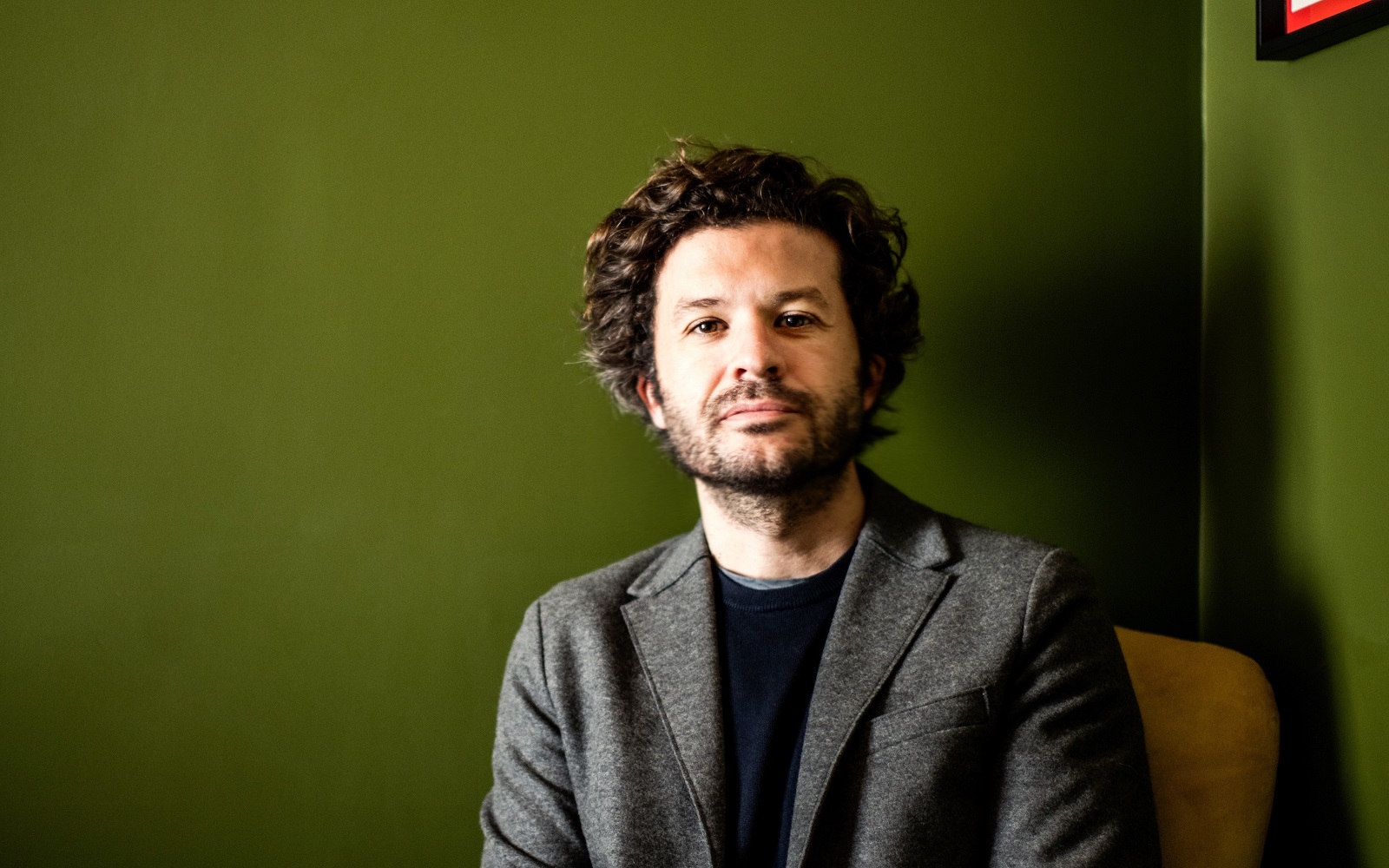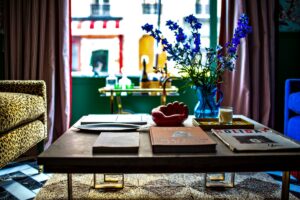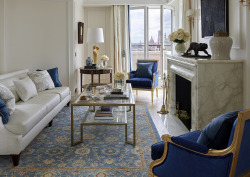The Touriste group of hotels has been on a well designed roll, punctuating the Parisian hotel scene with a series of bespoke boutique offerings. Writer Pauline Brettell caught up with Founder and CEO Adrien Gloaguen, who continues to drive the Touriste philosophy, which defines a vision of travel that is both ‘light and refined, fun and caring’…

Touriste, under the guidance of Glaoguen, has been championing local design and community as part of its ethos long before it became a trend. Since the acquisition of his very first property, the Sophie Germain, in 2008, the Touriste portfolio has been about individuality and location, while challenging the assumption that good design is exclusive to the realm of luxury hospitality. Aside from this connecting philosophy underpinning the brand, the one thing that all the hotels do have in common are their differences, with each property representing a design moment in time.

Image caption: Hotel Les Deux Gares | Image credit: Benoit Linero
Pauline Brettell: What made you decide to go into hospitality – was there a defining point?
Adrien Gloaguen: It was by a stroke of fate that I discovered my interest in the hotel business. At 18 years old, I landed a summer job in the offices of a youth hostel in London, where I fell in love with the atmosphere of a successful hospitality business. By the end of that first season, I decided I wanted to open my own establishment which led me to higher education studies in business school. After this, I wanted to try out all the different roles within the hotel business so I got a job at the front desk of a small hotel during which time I began my search for a hotel to take over.

Image caption: Hotel Les Deux Gares | Image credit: Benoit Linero
PB: Talk to us about your first property – what do you see as the biggest changes from your first to your most recent project?
AG: In 2008, at the age of 25, I decided on the Sophie Germain, a small establishment in Paris’ 14th arrondissement. Three years later, it was the turn of the Hôtel Paradis, with its forty or so rooms and views of the Sacré Coeur, to be renovated and reinvented. At the time, the 10th arrondissement was a gamble. It quickly proved to be a success, as even before the establishment officially opened, the singer M.I.A who came to stay for a night, stayed for almost a week. Then came le Panache in 2013, le Bienvenue in 2015, and Les Deux Gares in 2020 designed by Luke Edward Hall which really took off, and drew lots of media attention. We had little money, and no designer for the first refurbishment, but we’re proud to see how far we have come, as we’ve become more established over the past ten years.

Image caption: Hotel de La Boétie | Image credit: Simon Brown
PB: When you started, boutique/designer hotels where more of a rarity – now the competition is fierce – how do you remain ahead of the design pack?
AG: We have been lucky to work with some incredibly talented designers to give them their first opportunity to create a hotel, and we love giving them free reign to approach the project in their own way. I think this keeps each hotel feeling fresh and exciting for us and our guests who are excited to experience a different world each time they stay with Touriste. We also keep our prices competitive by having a simple offering with great design, while many other Parisian hotel openings are expensive.
PB: Does the location direct who you choose as a designer – or does the designer come first?
AG: We have a shortlist of “dream” designers we would like to approach, and we try to pair them with the property that will suit them best.
PB: While every Touriste hotel is unique – what is the common thread that runs through them all?
AG: Our designers put their own personal stamp on the hotel but at the same time we want travellers to feel the same sense of exploration and excitement of being a ‘tourist’ in a city when they come to our hotels. There is a certain tongue in cheek design aesthetic that runs throughout the portfolio which helps unlock this feeling!
PB: Up to now all your hotels are in Paris – Camping Liberté sees a departure from this – do you have plans to take Touriste further afield?
AG: We are certainly interested in taking Touriste beyond Paris. We don’t have a plan set out but we would expect to continue to buy one or two new hotels a year and we wouldn’t rule out other exciting cities such as London, Amsterdam and Madrid for example.

Image caption: Hotel de La Boétie | Image credit: Simon Brown
PB: Are there some key hotel design lessons learned en-route – decisions made ten years ago that you possibly wouldn’t do today?
AG: We learned early on that we wanted to keep our offering simple but impactful, so we don’t offer certain amenities such as on-site restaurants. It’s the high quality of the bedrooms that sets us apart as we are able to offer affordably priced rooms without spreading ourselves too thin.
PB: In your experience have guest expectations changed – and if so, how?
AG: With the rise of sites such as Airbnb, people don’t expect to spend extortionate amounts when they come to a city, but they still want the luxury feel of a hotel. This is where Touriste excels, as we specialise in affordably priced stays with the best design.

Image credit: Campings Liberté
PB: Tell us a little more about the Campings Liberte concept.
AG: Campings Liberté is a new adventure for us. Set between the lake and the ocean of Landrellec in Brittany and Lacanau the retro-inspired campsite overlooks the sea, and has private access to the beach with a sandy walkway that skirts the wild coastline. It comes from a sense of nostalgia and is all about restoring the authenticity and identity of outdoor vacations.
PB: And finally, do you have a ‘favourite child’? Your personal Touriste favourite?
AG: I don’t have a favourite child per se but it has been great to return to our roots in the 10th arrondissement for the latest opening of Hotel Chateau D’Eau. It’s an area I fell in love with for my first Touriste hotel, and it’s amazing to see how it’s changed over the years to fulfil its potential.
Main image credit: Touriste

























